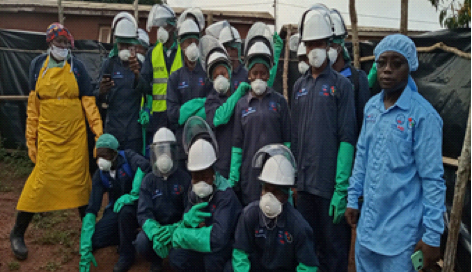 Earlier this year, Côte d’Ivoire was set to undertake its first-ever, large-scale IRS campaign to compliment the country’s existing ITN distribution program. Unfortunately, due to the sudden outbreak of COVID-19, all health activities were paused. But per WHO, PMI/USAID, NMCP, and the National Vector Control Steering Committee guidance, malaria prevention activities were authorized to continue, deeming them essential in helping to lessen the compounded effects that malaria and COVID would have on communities. Côte d’Ivoire’s campaign was initially intended to be in two phases, with a campaign in Sakassou in April and Nassian district in June. In order to mitigate the risk of spreading or contracting the coronavirus, the team decided to condense the campaign into a single, simultaneous campaign in the two targeted Districts instead of spraying one district at a time. But, with only the same amount of spray operators available, it seemed impossible to cover such a large-scale campaign in this way – after all, SOPs cannot be in two places at once! Coupled with the suspension of all STTA support due to travel restrictions, the team needed an innovative solution to the challenges they were up against.
Earlier this year, Côte d’Ivoire was set to undertake its first-ever, large-scale IRS campaign to compliment the country’s existing ITN distribution program. Unfortunately, due to the sudden outbreak of COVID-19, all health activities were paused. But per WHO, PMI/USAID, NMCP, and the National Vector Control Steering Committee guidance, malaria prevention activities were authorized to continue, deeming them essential in helping to lessen the compounded effects that malaria and COVID would have on communities. Côte d’Ivoire’s campaign was initially intended to be in two phases, with a campaign in Sakassou in April and Nassian district in June. In order to mitigate the risk of spreading or contracting the coronavirus, the team decided to condense the campaign into a single, simultaneous campaign in the two targeted Districts instead of spraying one district at a time. But, with only the same amount of spray operators available, it seemed impossible to cover such a large-scale campaign in this way – after all, SOPs cannot be in two places at once! Coupled with the suspension of all STTA support due to travel restrictions, the team needed an innovative solution to the challenges they were up against.
With this being the country’s first IRS campaign, the Côte d’Ivoire team was determined to make it a success despite the numerous hurdles they faced. To maximize human resources and address campaign needs, the team established an internal capacity-building strategy for all VL staff members on the team. The team trained the technical staff on the specifics of IRS implementation procedures, preparing them to maintain, lead, supervise, and coordinate the operational sites in Sakassou and Nassian. Recognizing that the campaign would need all the human resource support it could get, the team even trained the drivers, office assistants, finance, and administrative staff on some of the technical aspects of the campaign for additional support! As an added bonus, all training was conducted virtually via WebEx, WhatsApp, and recorded training video demonstrations.
In Nassian Health District, Mr. Koffi Ange (Office Assistant/Janitor) and Mr. Grebe Abreham (Driver) were trained as supervisors of Sominassé and Banvayo operational sites. During the 30-day campaign, they led and coordinated all IRS activities including morning mobilization, vehicle and bike coordination, spraying supervision, warehouse store management, waste management, data collection, end-of-day activities, and community mobilization. Sominassé and Banvayo exceeded their spray coverage goals with 102.7 % and 99.4% coverage respectfully, while Mr. Abraham and Mr. Koffi were respectively ranked 2nd and 3rd for best spray coverage among all the operational sites of the Nassian Health District. As a result of their leadership, the teams sprayed a total of 6,739 structures, protecting 10,762 people (1,817 children under 5 years old and 264 pregnant women) from malaria.
Way to go team Cote d’Ivoire for your cohesive and strategic approach, and congratulations to Abreham and Ange for your accomplishments!
 This week’s Fist Bump Friday goes out to VL ITN Lead Prince Owusu. For nearly two decades, Prince has promoted the use of bed nets across Ghana. As ITN Lead he ensures all ITN-related malaria prevention planned activities are implemented and achieve high-quality results. He works with NMCP to ensure households obtain ITNs through mass campaigns and routine channels, such as health facilities and schools. He also develops social and behavior change interventions to promote consistent ITN use and care among household members in efforts to reduce malaria. A key intervention being implemented is encouraging school children to drive ITN use and care among their peers, parents and in communities through drama and other community engagements.
This week’s Fist Bump Friday goes out to VL ITN Lead Prince Owusu. For nearly two decades, Prince has promoted the use of bed nets across Ghana. As ITN Lead he ensures all ITN-related malaria prevention planned activities are implemented and achieve high-quality results. He works with NMCP to ensure households obtain ITNs through mass campaigns and routine channels, such as health facilities and schools. He also develops social and behavior change interventions to promote consistent ITN use and care among household members in efforts to reduce malaria. A key intervention being implemented is encouraging school children to drive ITN use and care among their peers, parents and in communities through drama and other community engagements.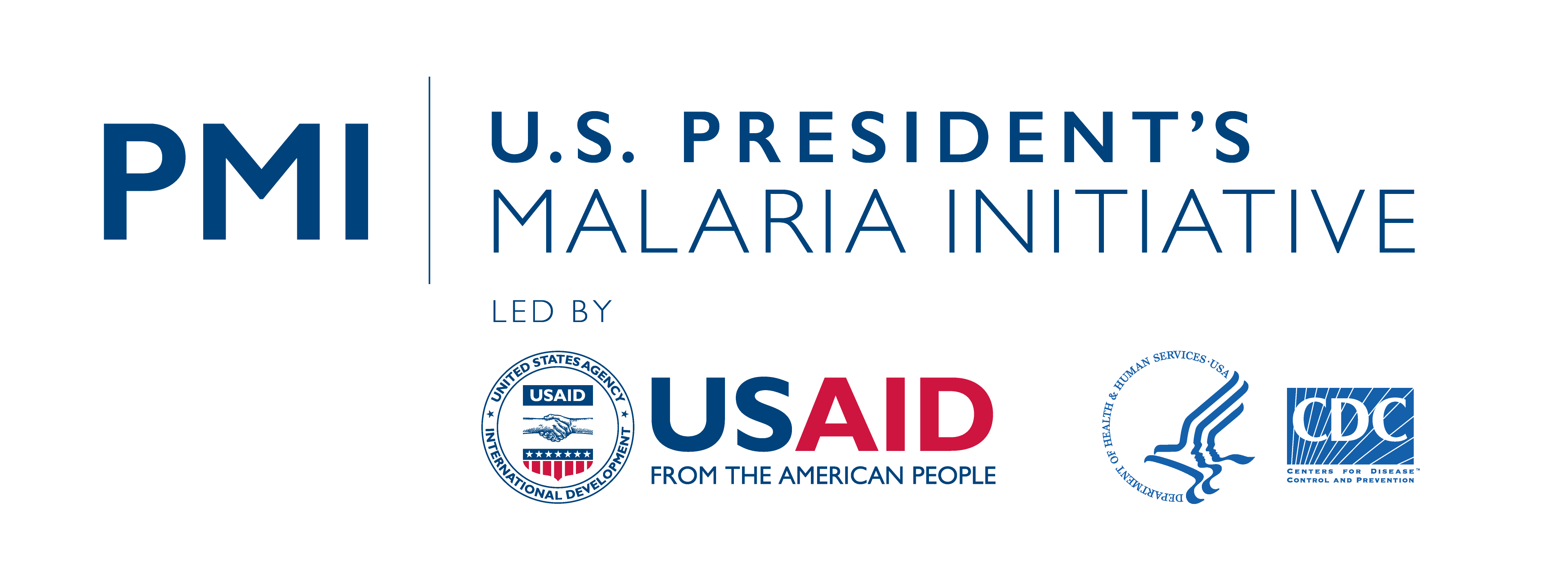

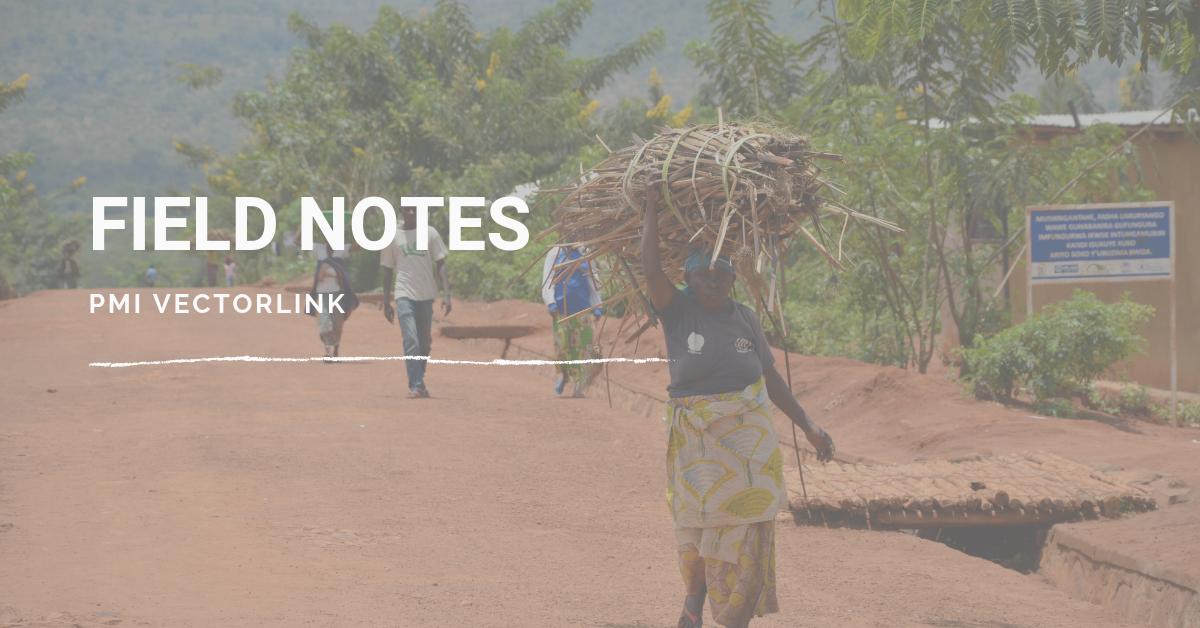

 This week’s Fist Bump goes out to VL Niger for their support in updating the country’s new Maternal and Child Health Card, which has now been validated by the Ministry of Health. VL Niger successfully supported the NMCP in including key messages on continuous ITN distribution on the new card.
This week’s Fist Bump goes out to VL Niger for their support in updating the country’s new Maternal and Child Health Card, which has now been validated by the Ministry of Health. VL Niger successfully supported the NMCP in including key messages on continuous ITN distribution on the new card.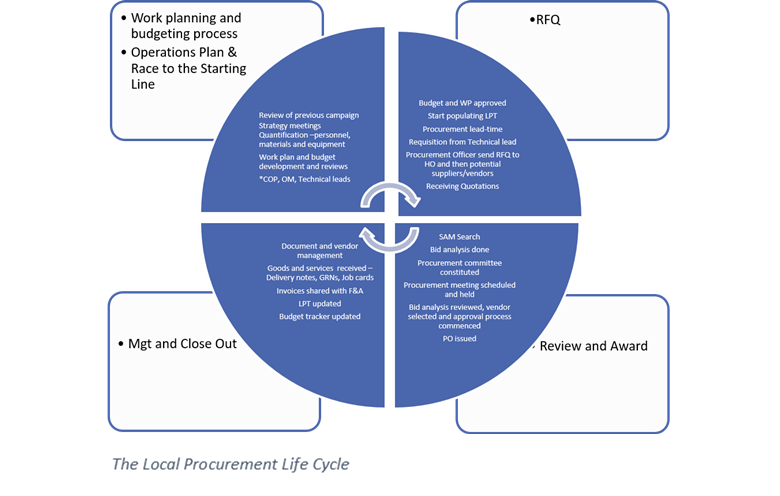 This week’s Fist Bump goes to VL Home Office’s Enobasi Ekanem and VL Kenya’s Zeddy Bore, Catherine Kamau, and Timothy Githinji for leading the recent Local Procurement Life Cycle training. This training, which follows the Local Procurement Tracker Training conducted in March 2020, emphasized the local procurement process before the RFQ stage.
This week’s Fist Bump goes to VL Home Office’s Enobasi Ekanem and VL Kenya’s Zeddy Bore, Catherine Kamau, and Timothy Githinji for leading the recent Local Procurement Life Cycle training. This training, which follows the Local Procurement Tracker Training conducted in March 2020, emphasized the local procurement process before the RFQ stage.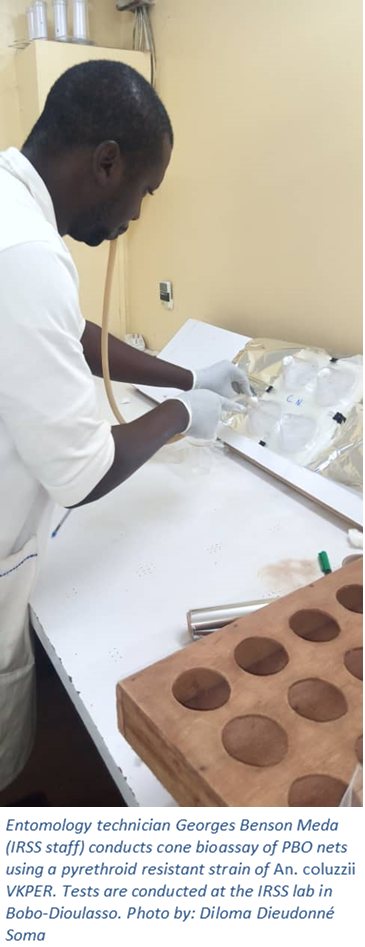 k’s Fist Bump Friday goes out to VL Burkina Faso for their success in completing bioassays of PBO-synergist and dual active ingredient Interceptor G2 (IG2) nets. This was the first time bioassay Standard Operating Procedures (SOPs) for PBO and IG2 nets, which were developed with input from VectorLink staff, were implemented in the field. Bioassays are important for understanding the insecticidal effectiveness of ITNs and do this by measuring mosquito knockdown and mortality, among other variables. For pyrethroid-only ITNs, these two variables can be combined into measures of optimal and minimal effectiveness. SOPs outline how labs should be performing the bioassays for different types of nets.
k’s Fist Bump Friday goes out to VL Burkina Faso for their success in completing bioassays of PBO-synergist and dual active ingredient Interceptor G2 (IG2) nets. This was the first time bioassay Standard Operating Procedures (SOPs) for PBO and IG2 nets, which were developed with input from VectorLink staff, were implemented in the field. Bioassays are important for understanding the insecticidal effectiveness of ITNs and do this by measuring mosquito knockdown and mortality, among other variables. For pyrethroid-only ITNs, these two variables can be combined into measures of optimal and minimal effectiveness. SOPs outline how labs should be performing the bioassays for different types of nets.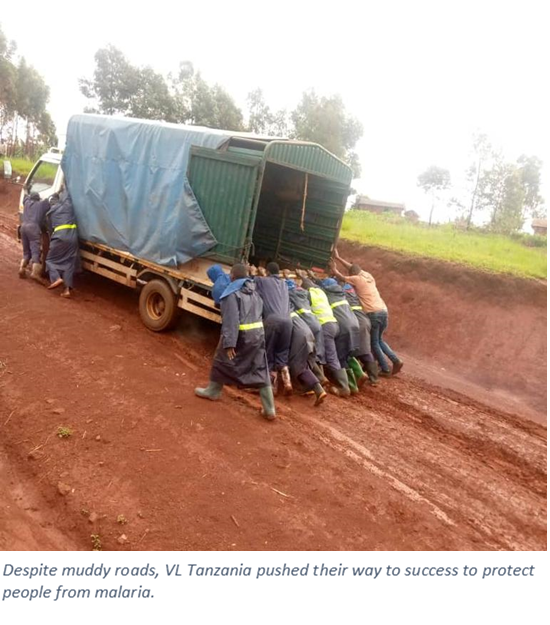 Happy New Year, PMI VectorLink Project! Before we leave 2020 completely, let’s all give a huge congratulations to VL Tanzania for their successful IRS campaign on Mainland, which they completed on Dec 21, 2020. It was a herculean effort – 6 districts and 3 refugee camps stretching over 700km in Northwest Tanzania in two phases. Among these districts, one (Ukerewe) is composed entirely of islands, adding to the complexity of the campaign. VL Tanzania scaled-up mobile data collection from the 2020 pilot in the spring, prioritizing the use of mobile data on remote islands.
Happy New Year, PMI VectorLink Project! Before we leave 2020 completely, let’s all give a huge congratulations to VL Tanzania for their successful IRS campaign on Mainland, which they completed on Dec 21, 2020. It was a herculean effort – 6 districts and 3 refugee camps stretching over 700km in Northwest Tanzania in two phases. Among these districts, one (Ukerewe) is composed entirely of islands, adding to the complexity of the campaign. VL Tanzania scaled-up mobile data collection from the 2020 pilot in the spring, prioritizing the use of mobile data on remote islands. in tents at campsites, VL Zimbabwe had to be extra vigilant to reduce any risk of COVID-19. It’s exciting to report that during the whole campaign, there was no reported contact with suspected cases or symptoms/signs of COVID-19 among seasonal workers nor VL staff.
in tents at campsites, VL Zimbabwe had to be extra vigilant to reduce any risk of COVID-19. It’s exciting to report that during the whole campaign, there was no reported contact with suspected cases or symptoms/signs of COVID-19 among seasonal workers nor VL staff. This week’s Fist Bump goes to VL Senegal for the completion of their ITN PBO distribution campaign during the COVID-19 epidemic. VL Senegal carried out the campaign in collaboration with Senegal’s NMCP from November 12-23, 2020. To prepare for the campaign, VL Senegal conducted:
This week’s Fist Bump goes to VL Senegal for the completion of their ITN PBO distribution campaign during the COVID-19 epidemic. VL Senegal carried out the campaign in collaboration with Senegal’s NMCP from November 12-23, 2020. To prepare for the campaign, VL Senegal conducted: and VL Mozambique for your tireless efforts in ensuring protection from malaria. Throughout 2020, all of PMI VectorLink’s country teams have carefully planned their work to ensure we carry out our IRS and ITN campaigns during the pandemic without leaving anyone unprotected. And while these congratulations for completing a campaign may seem like just another day for VectorLink, in fact, it’s quite a feat.
and VL Mozambique for your tireless efforts in ensuring protection from malaria. Throughout 2020, all of PMI VectorLink’s country teams have carefully planned their work to ensure we carry out our IRS and ITN campaigns during the pandemic without leaving anyone unprotected. And while these congratulations for completing a campaign may seem like just another day for VectorLink, in fact, it’s quite a feat. Earlier this year, Côte d’Ivoire was set to undertake its first-ever, large-scale IRS campaign to compliment the country’s existing ITN distribution program. Unfortunately, due to the sudden outbreak of COVID-19, all health activities were paused. But per WHO, PMI/USAID, NMCP, and the National Vector Control Steering Committee guidance, malaria prevention activities were authorized to continue, deeming them essential in helping to lessen the compounded effects that malaria and COVID would have on communities. Côte d’Ivoire’s campaign was initially intended to be in two phases, with a campaign in Sakassou in April and Nassian district in June. In order to mitigate the risk of spreading or contracting the coronavirus, the team decided to condense the campaign into a single, simultaneous campaign in the two targeted Districts instead of spraying one district at a time. But, with only the same amount of spray operators available, it seemed impossible to cover such a large-scale campaign in this way – after all, SOPs cannot be in two places at once! Coupled with the suspension of all STTA support due to travel restrictions, the team needed an innovative solution to the challenges they were up against.
Earlier this year, Côte d’Ivoire was set to undertake its first-ever, large-scale IRS campaign to compliment the country’s existing ITN distribution program. Unfortunately, due to the sudden outbreak of COVID-19, all health activities were paused. But per WHO, PMI/USAID, NMCP, and the National Vector Control Steering Committee guidance, malaria prevention activities were authorized to continue, deeming them essential in helping to lessen the compounded effects that malaria and COVID would have on communities. Côte d’Ivoire’s campaign was initially intended to be in two phases, with a campaign in Sakassou in April and Nassian district in June. In order to mitigate the risk of spreading or contracting the coronavirus, the team decided to condense the campaign into a single, simultaneous campaign in the two targeted Districts instead of spraying one district at a time. But, with only the same amount of spray operators available, it seemed impossible to cover such a large-scale campaign in this way – after all, SOPs cannot be in two places at once! Coupled with the suspension of all STTA support due to travel restrictions, the team needed an innovative solution to the challenges they were up against.